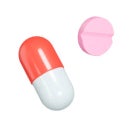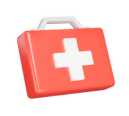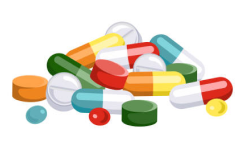SingHealth Duke-NUS Academic Medical Centre will NEVER ask you to transfer money over a call. If in doubt, call the 24/7 ScamShield helpline at 1799, or visit the ScamShield website at www.scamshield.gov.sg.
Antifungal (topical)
Uses
What is Antifungal (topical) for?
Topical antifungals are used to treat fungal skin and nail infections. Antifungal shampoos are used to treat dandruff and seborrheic dermatitis (scaling of skin which may be accompanied by itch). These medications mainly work by preventing the fungal cells from growing. They may contain ingredients such as
Miconazole, Clotrimazole, Ketoconazole, Terbinafine, Bifonazole, Sertaconazole, Isoconazole and Amorolfine. They may come in many different brands and dosage forms such as cream, gel, lotion, powders, nail lacquers, solutions and spray.
Some products may also include hydrocortisone, a steroid, in combination with the antifungal to reduce the inflammation or redness and itch caused by the fungal infection.
You can also find out about this medication by watching these videos:
They are available in English, 中文, Melayu and தமிழ்: Topical Antifungal
How should I take or use Antifungal (topical)?
- Use these medications as recommended by your healthcare professional. Consult your healthcare professional if you are not sure how to use these medications correctly.
- Most of the topical medications should be applied twice a day to the affected area (please confirm the instructions with your healthcare professional as some products may have different frequency of application). Apply to the area surrounding the infected area as well.
- Continue applying for at least one more week after symptoms go away to make sure the fungal infection has completely cleared.
- Do not stop applying your medication without checking with your healthcare professional, as stopping too soon may cause the infection to come back.
- If you are applying another cream, lotion, gel or ointment onto the affected area, wait for at least 15 minutes before applying them.
- Antifungal nail lacquers are applied once or twice weekly. Please refer to the product leaflet provided by the manufacturer for the instructions.
- Antifungal shampoos/solutions should be applied on the affected area for 3-5 minutes to ensure sufficient contact time before rinsing it off with water. They are applied either once a day, or two to three times a week depending on the condition. Please consult your healthcare professional for further instructions.
What should I do if I forget to take or use Antifungal (topical)?
If you miss a dose, apply it as soon as you remember. However, if it is almost time for your next dose, skip the missed dose and continue normally. Do not apply two doses or extra medication to make up for the missed dose.
Precaution
What precautions should I take when taking or using Antifungal (topical)?
- Wash your hands well before and after handling these medications.
- Inform your healthcare professional if:
- You are allergic to topical antifungals or any other ingredients used in these medications.
- You are pregnant, planning to become pregnant or breastfeeding.
- You are taking any other medications, including supplements, traditional medications and herbal remedies
What food or medication should I avoid when I take or use Antifungal (topical)?
Check with your healthcare professional if other topical medications may be applied together with these medications.
Side Effects
What are some common side effects of Antifungal (topical)?
Mild stinging, itching and redness may occur at the affected area.
- These side effects are usually mild and go away after some time. However, if the symptoms are bothersome, do not go away or become worse, stop these medications and consult your healthcare professional.
What are some rare but serious side effects that I need to seek medical advice immediately?
The symptoms of a drug allergy include one or more of the following:
- Swollen face/eyes/lips/tongue
- Difficulty in breathing
- Itchy skin rashes over your whole body
If you experience any of these symptoms, you should stop these medications and see your doctor immediately.
You can also find out about drug allergies by watching these videos:
They are available in English, 中文, Melayu and தமிழ்: Drug Allergies
Signs that your condition may require further medical attention include:
- Skin is blistered, broken, bleeding or raw
- Signs of fever, fatigue, swollen lymph nodes
- Fungal infection symptoms appear in the mouth or around or on the reproductive organs
- For nail fungus, if more than half your nail is affected, or the infection reaches the half moon of the nail
- For nail fungus, the skin surrounding your affected nail is red, painful, swollen or filled with pus
- Fungal infection symptoms that do not improve 3 weeks after treatment (for fungal skin infection)
- Fungal infection symptoms that keep coming back after going away
- Fungal infection symptoms that worsen with or without treatment
If you experience any of these symptoms, you should stop these medications and see your doctor immediately.
Handling
How should I store Antifungal (topical)?
Store in a cool and dry place, away from direct sunlight. Keep these medications away from children.
Discard these medications within a year after opening unless stated otherwise by the manufacturer.
How do I throw away Antifungal (topical) safely?
Pack these medications into a black trash bag and seal it tightly before throwing it into the rubbish chute or bin.
Disclaimers
Please take note that the above is not a complete list of all possible side effects. If you have any concerns about your medication or if you have other side effects that you think are caused by this medication, please consult your doctor or pharmacist.
If you take more than the recommended dose, please seek medical advice immediately. The information provided on this page does not replace information from your healthcare professional. Please consult your healthcare professional for more information.
This article is jointly developed by members of the National Medication Information workgroup. The workgroup consists of cluster partners (National Healthcare Group, National University Health System and SingHealth), community pharmacies (Guardian, Unity and Watsons) and Pharmaceutical Society of Singapore. The content does not reflect drug availability and supply information in pharmacies and healthcare institutions. You are advised to check with the respective institutions for such information.
Last updated on April 2025

Need More Medicine?
Use Medicine Order Service on HealthBuddy.

Medicines Reminder
Get reminders and chart progress on HealthBuddy.
© 2025 SingHealth Group. All Rights Reserved.















































